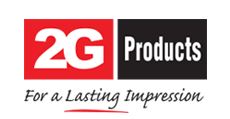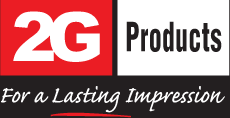News
What are aluminium name plates?01 Dec 20
Aluminium name plates can be used in a wide variety of settings, from boosting brand awareness to displaying critical information on products, and giving employees a sense of importance and recognition.
They can be designed and manufactured to serve different purposes, meaning they’re available in a wide variety of sizes, styles and thicknesses. That said, the main reason why aluminium has quickly become one of the most popular materials for name plates is because of its corrosion resistance.
Aluminium’s unwavering popularity
When the surface of aluminium is exposed to air, an oxide coating forms almost instantly, so you have a fast corrosion resistant layer. That said, it can be further improved with surface treatments such as anodising, which means that any kind of text, logo, slogan or graphic can be screen-printed and sealed beneath the anodic layer.
With extra durability and superb resistance to abrasion, chemicals, solvents and extreme temperatures, you can create any kind of name plate, ensuring it’s fit for purpose — even in very harsh environments. The anodic layer can also provide better adhesion for paint primers and glues, especially when compared to applying such finishing products on bare metal.
The anodic coat
The anodising process is critical when producing a top-quality name plate, especially for harsh industrial settings such as aerospace, automotive, manufacturing and transport. As we’ve touched on, the anodic coat seals in the artwork to achieve a highly resilient name plate, but how is this process carried out?
Anodising is an electrochemical process. The aluminium is chemically treated to open the pores of the metal, whilst an anodyne dye is then printed onto the surface. This dye penetrates the surface and is then sealed into the aluminium, in what is known as a ‘chemical bath’. By submerging the aluminium into this acid electrolyte bath and passing an electric current through, you almost instantly have a very dependable, weather-resistant plate with a long lifespan, even in outdoor environments. There are other metals that can technically be anodised, but it’s not necessarily recommended. For example, with carbon steel and iron, the oxide layer that forms is rust, which promotes corrosion.
Further improvements
Depending on the purpose of the aluminium name plate, the thickness can be increased to improve the wear resistance of the anodised layer, making it highly durable through many years of hard, dependable service. At 2G Products, we regularly manufacture name plates for the harshest of environments, including those for dive vessels, shipping containers, aircraft, medical, military and offshore type industries as well as precision electronic applications. We skilfully place the artwork 20 microns below the anodised surface, meaning they’re scratchproof and solvent resistant too.
Whether you require one, ten or 100 aluminium nameplates, our friendly team will go above and beyond to exceed your expectations. To learn more about us and how we can help you, please call the 2G team today on 01224 682 682 or send us a message here.

